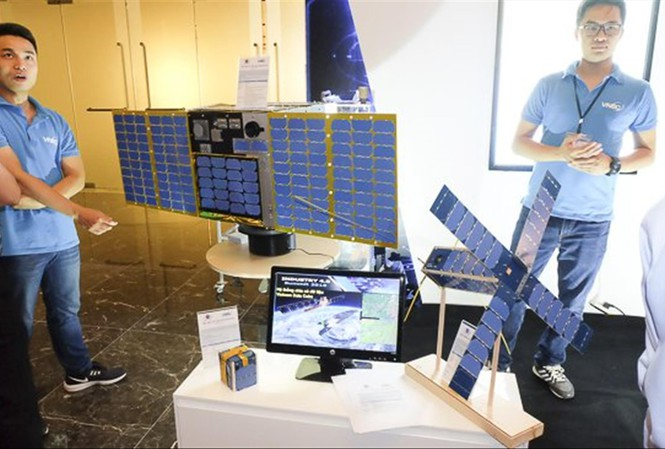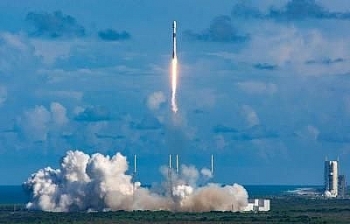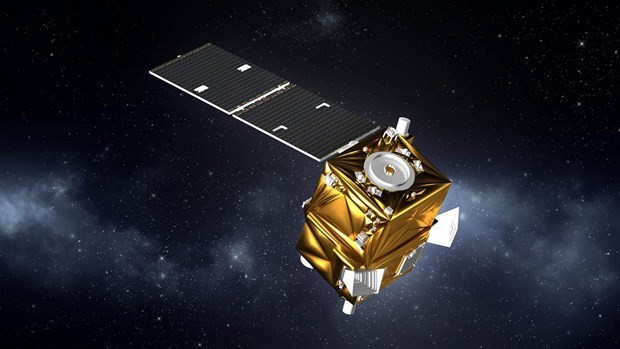Made-in-Vietnam satellite to be launched into orbit this September
| Satellite near China-India disputed border shows China emptied military camps | |
| Japan to launch made-in-Vietnam satellite into space in 2021 | |
| South Korea's first-ever military satellite launched |
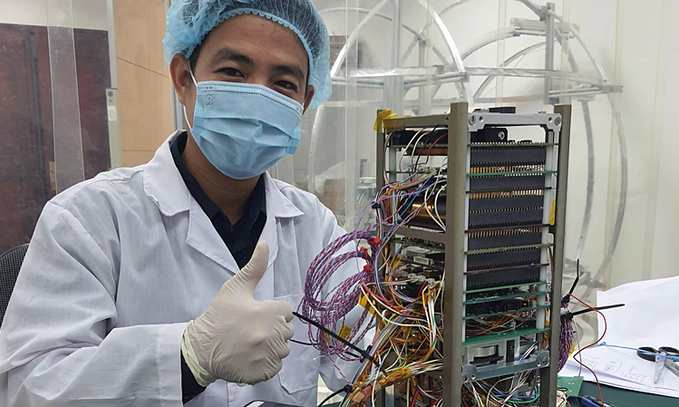 |
| Photo: VN Express |
The development of NanoDragon, a microsatellite developed by a team of Vietnamese engineers, has been fully completed and the device is set to be sent to Japan to undergo quality control before being launched into orbit in September.
Dr. Le Xuan Huy, deputy director-general of the Vietnam National Space Centre (VNSC), says the satellite, which weighs approximately four kg, has been completely researched and manufactured by VNSC engineers. Indeed, local workers have completed the project through its design phase to its installation, including the mechanical structure and power distribution circuit.
In the near future, NanoDragon will be sent to Japan’s Kyushu Institute of Technology in order to undergo further tests in a stimulating environment. Following the completion of these tests, the satellite is due to be returned to Vietnam before being launched by the Japanese Epsilon missile in September, said Vietnamnet.
Dr. Huy notes that the microsatellite is anticipated to operate in solar synchronous orbit (SSO) at an altitude of roughly 520 km. Its main task will be to integrate an Automatic Identification System (AIS) used for the purpose of tracking and monitoring vessels at sea. In addition, it will make use of an optical imaging device in order to verify the quality of the satellite posture controller while operating in orbit.
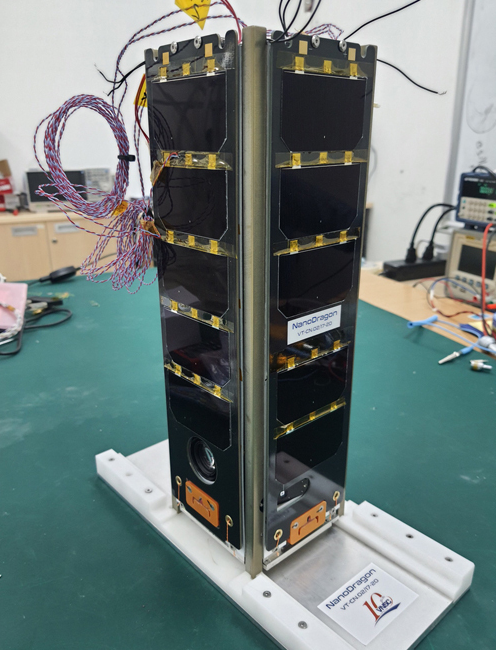 |
| Photo: VN Express |
Developed and built by the Vietnam National Space Center (VNSC), the satellite weighs four kilos and belongs to the CubeSat category, a type of miniaturized satellite for space research that is made up of multiple 10 cm × 10 cm × 10 cm modules.
NanoDragon will be sent to the Kyushu Institute of Technology in Japan, and between March 8-22, experts there will put it through several tests including vibration, shock, and vacuum heat, VNSC Director Pham Anh Tuan said Tuesday. After the test, it will return to Vietnam and wait for the launch that has been scheduled for September in Japan. Japan Aerospace Exploration Agency is set to launch 15 satellites, including the NanoDragon, into space this year as part of Japan's second experimental satellite program.
Used as an optical imaging device to test satellite positioning in space and to track and monitor ships at sea, NanoDragon will be brought into space by Japanese rocket Epsilon at free cost in line with the "Innovative satellite technology demonstration" program, VN Express said.
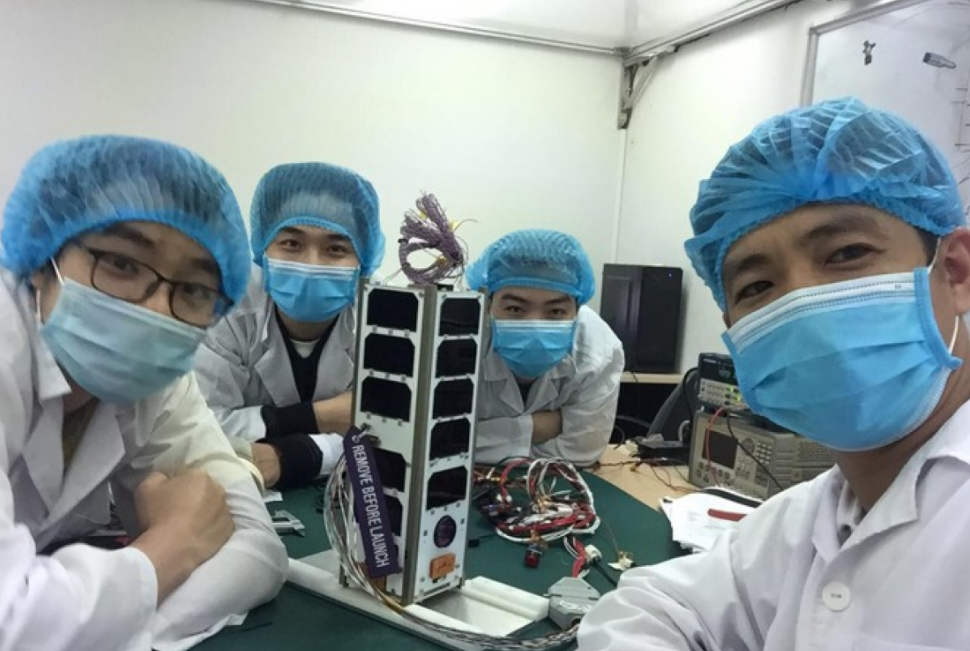 |
| Photo: VOV |
The program has small satellites used to perform orbital demonstrations of new key components and technologies in a timely and affordable manner. It is part of the Japan Aerospace Exploration Agency’s efforts to assist the development of the innovative fundamental technologies for satellites as stated in the Basic Plan on Space Policy of the Japanese government.
The satellite is the product of Vietnam's nano-sized micro-satellite project for the 2016-2020 period. Japan sent the 5- 5-kilogram Vietnamese satellite MicroDragon into space from Uchinoura Space Center in Kagoshima Prefecture, southern Japan, in January 2020. It was used to observe Vietnam’s coastline, evaluate water quality, locate fishery resources and monitor changes to serve aquaculture, detect cloud coverage and aerosols, collect ground-based sensor signals and transmit them to stations on Earth.
According to Vietnamnet, Vietnam is one of the countries in the world to be most affected by global warming and climate change. Space services and technologies will help the nation to gain a better understanding of climate change whilst supporting the process of monitoring and prevention of natural disasters, thereby contributing to mitigating their consequences. Vietnam is one of the countries in the world to be most affected by global warming and climate change. Space services and technologies will help the nation to gain a better understanding of climate change whilst supporting the process of monitoring and prevention of natural disasters, thereby contributing to mitigating their consequences.
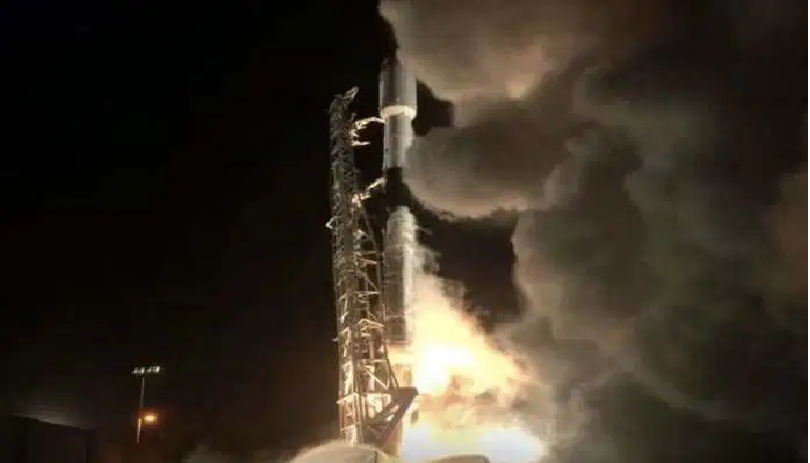 | SpaceX successfully launched 60 Starlink satellites into the orbit Just a few days after the historic flight sending astronauts to the ISS space station from the United States, SpaceX launched 60 Starlink satellites into ... |
 | Satellite Internet to surpass fiber optic one in Vietnam In the conference ‘Developments in Satellite Technologies’ co-held by the Ministry of Information & Communications and the Global Satellite Coalition (GSC), predictions revealed that in ... |
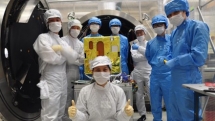 | Nation to launch remote sensing satellite in 2019 (VNF) - Vietnam is expected to rocket a radar Earth observation satellite called LOTUSat-1 in early 2019. |
Recommended
 Economy
Economy


